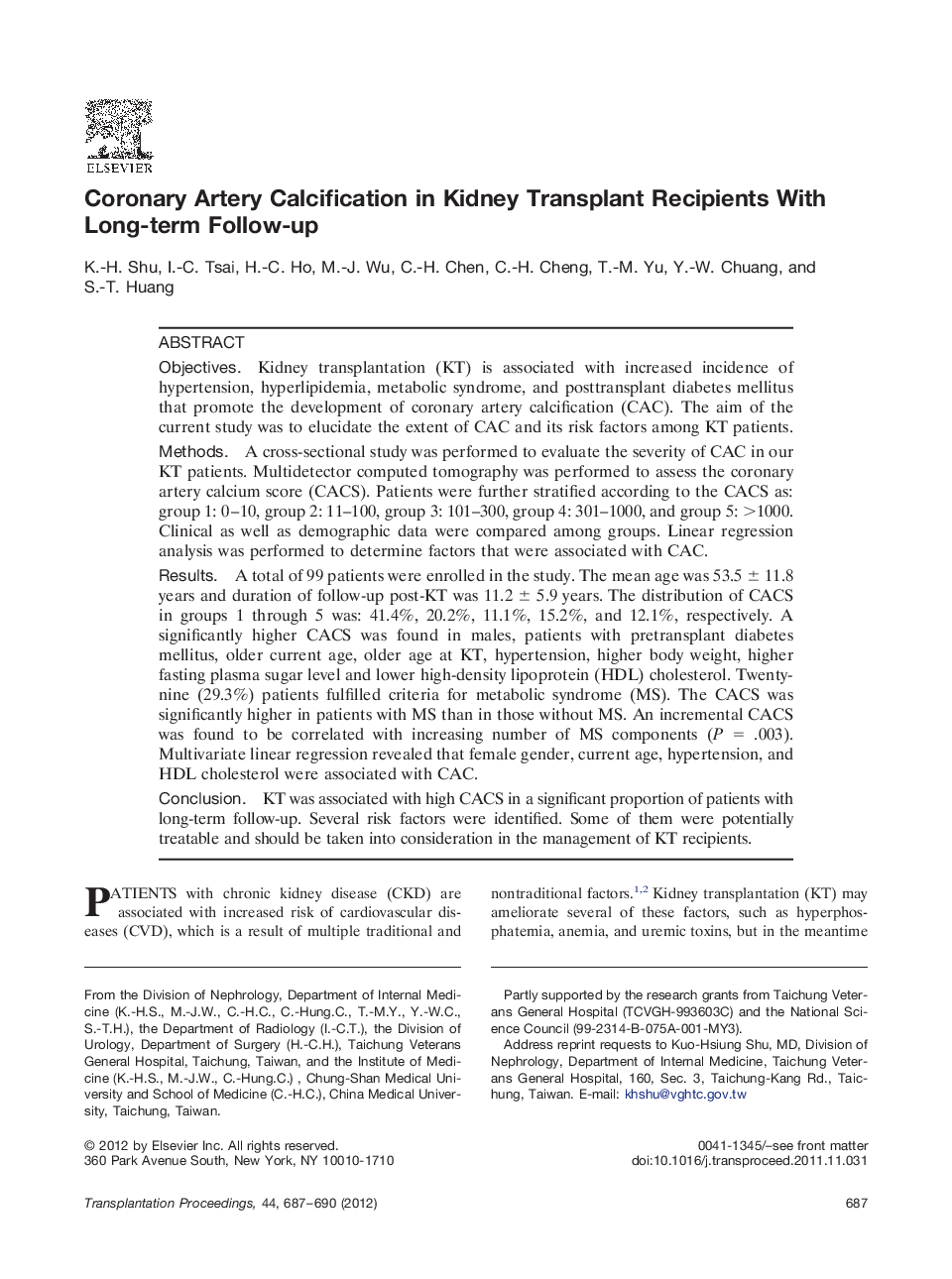| Article ID | Journal | Published Year | Pages | File Type |
|---|---|---|---|---|
| 4257770 | Transplantation Proceedings | 2012 | 4 Pages |
ObjectivesKidney transplantation (KT) is associated with increased incidence of hypertension, hyperlipidemia, metabolic syndrome, and posttransplant diabetes mellitus that promote the development of coronary artery calcification (CAC). The aim of the current study was to elucidate the extent of CAC and its risk factors among KT patients.MethodsA cross-sectional study was performed to evaluate the severity of CAC in our KT patients. Multidetector computed tomography was performed to assess the coronary artery calcium score (CACS). Patients were further stratified according to the CACS as: group 1: 0–10, group 2: 11–100, group 3: 101–300, group 4: 301–1000, and group 5: >1000. Clinical as well as demographic data were compared among groups. Linear regression analysis was performed to determine factors that were associated with CAC.ResultsA total of 99 patients were enrolled in the study. The mean age was 53.5 ± 11.8 years and duration of follow-up post-KT was 11.2 ± 5.9 years. The distribution of CACS in groups 1 through 5 was: 41.4%, 20.2%, 11.1%, 15.2%, and 12.1%, respectively. A significantly higher CACS was found in males, patients with pretransplant diabetes mellitus, older current age, older age at KT, hypertension, higher body weight, higher fasting plasma sugar level and lower high-density lipoprotein (HDL) cholesterol. Twenty-nine (29.3%) patients fulfilled criteria for metabolic syndrome (MS). The CACS was significantly higher in patients with MS than in those without MS. An incremental CACS was found to be correlated with increasing number of MS components (P = .003). Multivariate linear regression revealed that female gender, current age, hypertension, and HDL cholesterol were associated with CAC.ConclusionKT was associated with high CACS in a significant proportion of patients with long-term follow-up. Several risk factors were identified. Some of them were potentially treatable and should be taken into consideration in the management of KT recipients.
